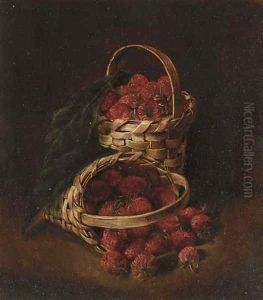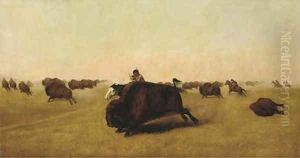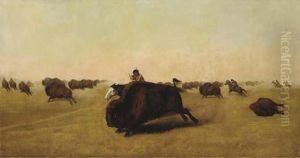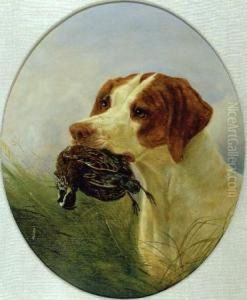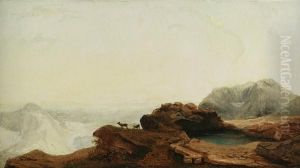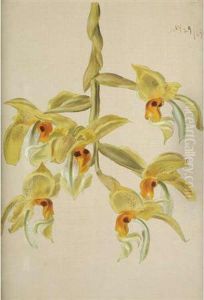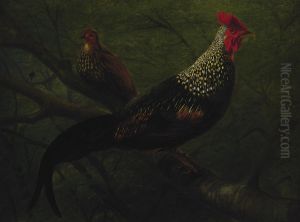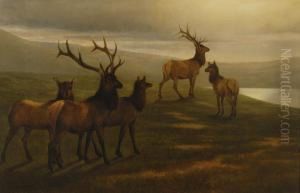William Jacob Hays Paintings
William Jacob Hays was an American painter known for his detailed and realistic paintings of wildlife, particularly the American bison or buffalo. Born on May 8, 1830, in Louisville, Kentucky, Hays developed an interest in art at an early age. There are few records about his early training, but it is known that he moved to New York City in the 1850s, where he became associated with the Hudson River School, a group of artists known for their romantic landscapes and emphasis on the natural beauty of the American landscape.
Hays traveled extensively throughout the American West, which greatly influenced his work. His travels took him to places like the Missouri River and the Rocky Mountains, where he could observe the wildlife and the environment firsthand. This experience was crucial in the development of his style, which combined the attention to detail characteristic of natural history illustration with the dramatic compositions of the Hudson River School.
One of Hays' most significant contributions to American art was his documentation of the American bison. During the mid-19th century, these animals were being hunted to near extinction, and Hays' paintings serve as a valuable record of these majestic creatures in their natural habitat. His work was recognized for its accuracy and played a role in early conservation efforts by raising public awareness about the plight of the bison.
Despite his success as a painter, Hays' life was cut short when he died on June 26, 1875, in New York City. His legacy is preserved through his art, which continues to be appreciated for its combination of scientific detail and artistic beauty. Hays' paintings can be found in several prominent collections and have been displayed in museums across the United States.
